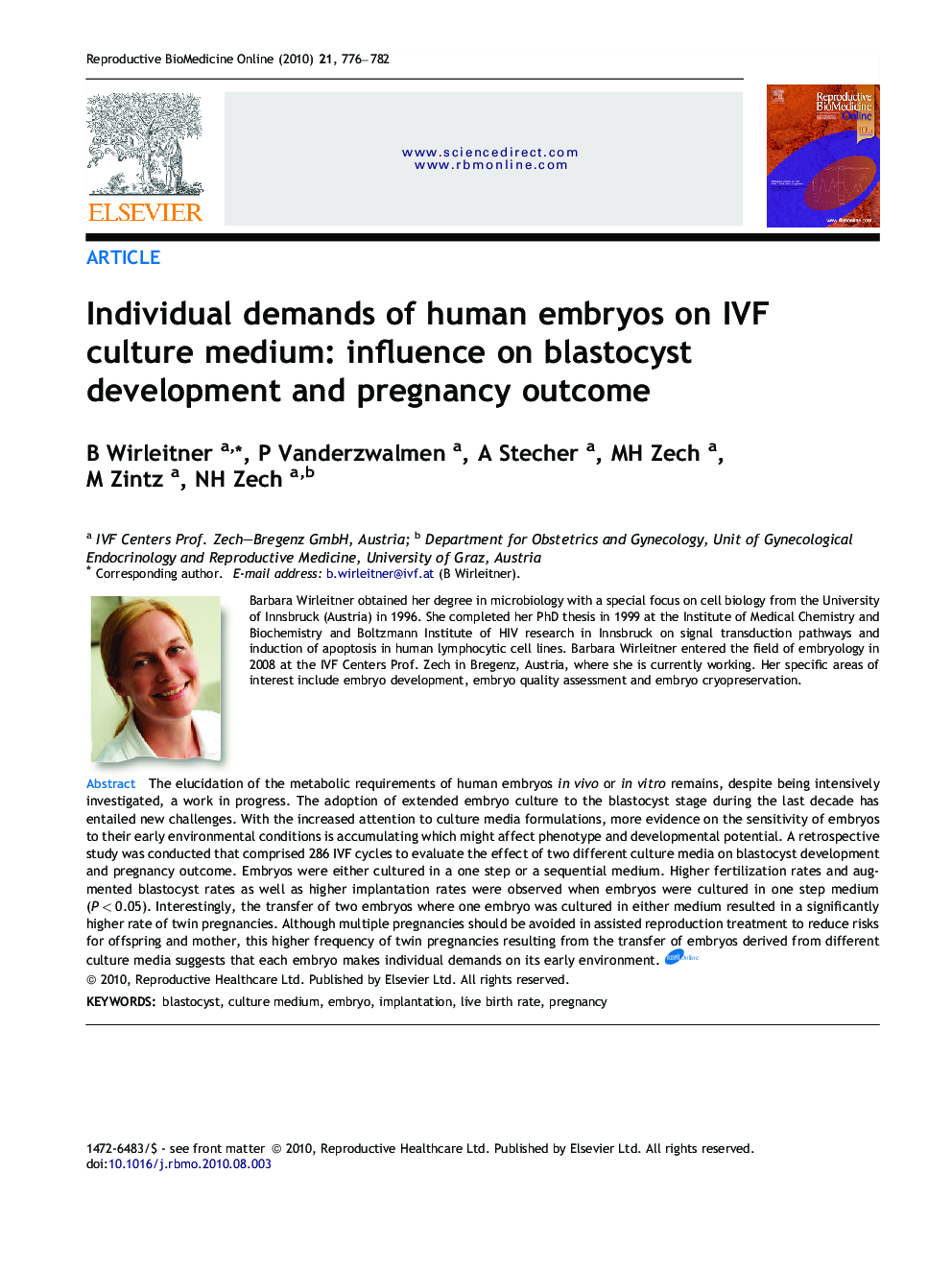| Article ID | Journal | Published Year | Pages | File Type |
|---|---|---|---|---|
| 3971211 | Reproductive BioMedicine Online | 2010 | 7 Pages |
Abstract
Despite intensive research, the metabolic requirements of human embryos developing in vivo or cultured in vitro are still not completely understood. Questions relating to the proper environment for embryos cultured in vitro are becoming increasingly important with the more widespread use nowadays of extended embryo culture to the blastocyst stage. Choice of the optimal culture medium has also become more important as accumulating evidence suggests that the early embryo is sensitive to the environmental conditions it experiences and that these may result in changes both to the phenotype and the embryo's potential to develop. We conducted a retrospective study comprising 286 IVF cycles to evaluate the effect of two different culture media on embryo development to the blastocyst stage and pregnancy outcome. Results showed higher rates of fertilization, blastocyst formation and implantation when a one-step medium was used for embryo culture. Interestingly, when two embryos were transferred where one of the embryos had been cultured in the one-step medium and the second in the sequential medium, a significantly higher rate of twin pregnancies was observed. The higher frequency of twin pregnancies resulting from the transfer of embryos derived from different culture media might suggest that each embryo makes individual demands on its early environment.
Related Topics
Health Sciences
Medicine and Dentistry
Obstetrics, Gynecology and Women's Health
Authors
B. Wirleitner, P. Vanderzwalmen, A. Stecher, M.H. Zech, M. Zintz, N.H. Zech,
